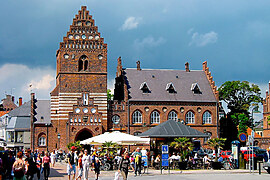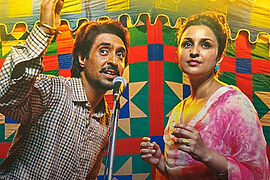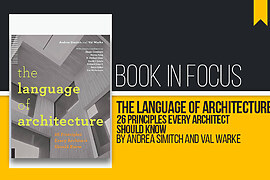First published in 1972, Learning from Las Vegas is a book written by architects and writers, Robert Venturi and Denise Scott Brown, and co-authored by Steven Izenour. It inspired a whole generation of architectural practitioners and enthusiasts and sparked a discussion on modernism and postmodernism approaches for architecture upon its release. In this book, the authors studied the architecture of Las Vegas through the lens of modernism and analyzed why and how it is different from other cities around the world. The text also emphasizes on the practice of “symbolism over form” that influenced the design language of the city.
The book was not only groundbreaking for its time but is also considered to be one of the most important texts written about architectural theory to this day.
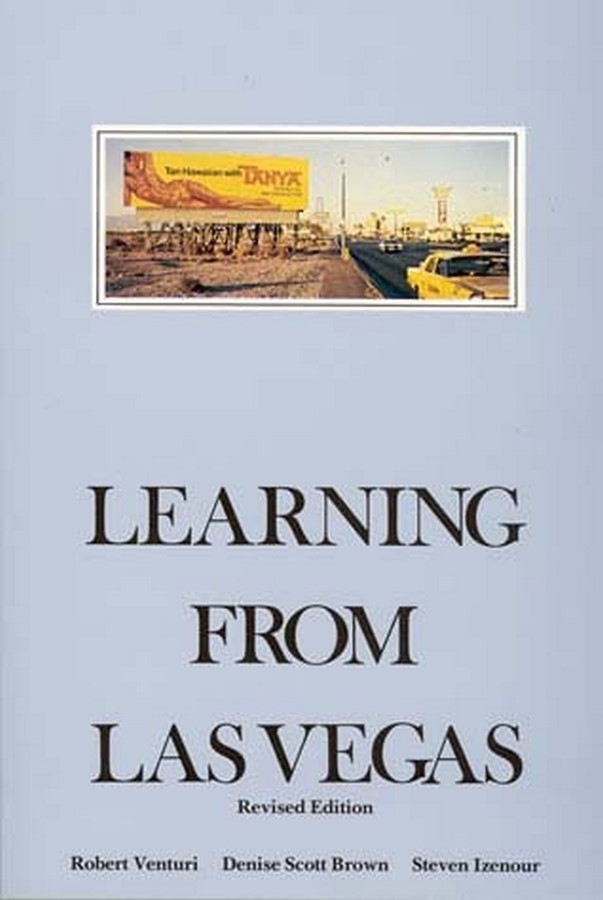
Context of the Book | Learning from Las Vegas
In 1968, Denise Scott Brown and Robert Venturi, along with their teaching assistant Steven Izenour, took 13 students to Las Vegas as part of a research project they conducted at Yale School of Art and Architecture. The group of students included nine architecture students, two planning students, and two graphic design students. Together, they observed, documented, and analyzed the famous Las Vegas Commercial Strip and published their findings in this book. They aimed to understand and examine the architecture of Las Vegas, particularly that of the Commercial Strip and reassess the need for symbolism in architecture.

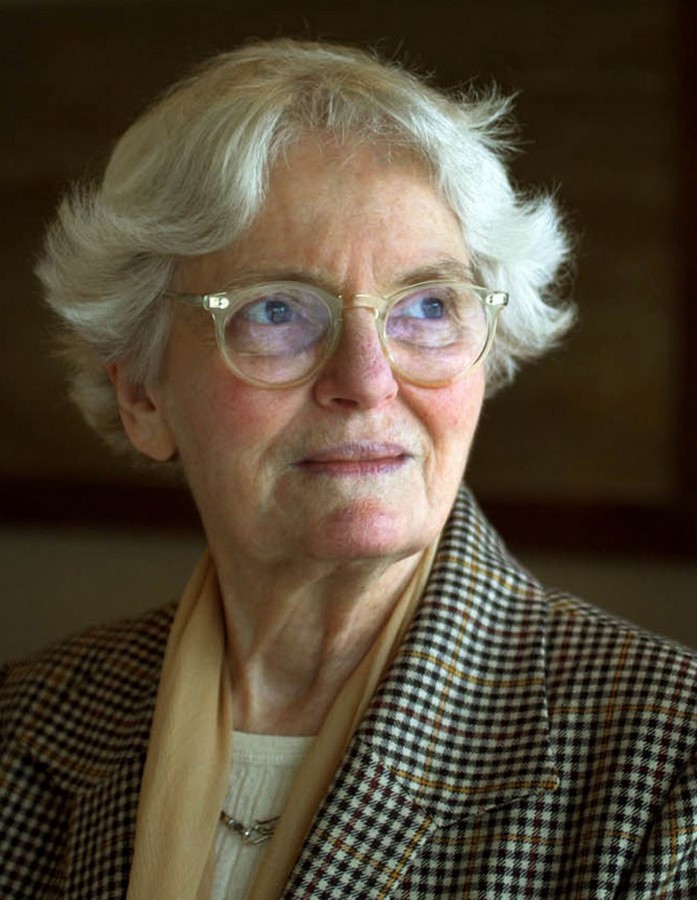

Anatomy of the Book
The revised edition of the book, published by MIT press in 1977, is divided into two parts and includes two prefaces written by Robert Venturi and Denise Scott Brown themself. However, the unabridged, 1972 first edition of the book also contained a third part that covered the architectural work of the firm, Venturi and Rauch.
The text in the book is suspended in between numerous images and illustrations of the landscape. The authors have also included a variety of maps, urban layouts, demographic charts, and activity patterns that help to provide a deeper understanding of the text. Original imagery from their trip, handwritten notes, and sketches are also featured in the book to complement their research.
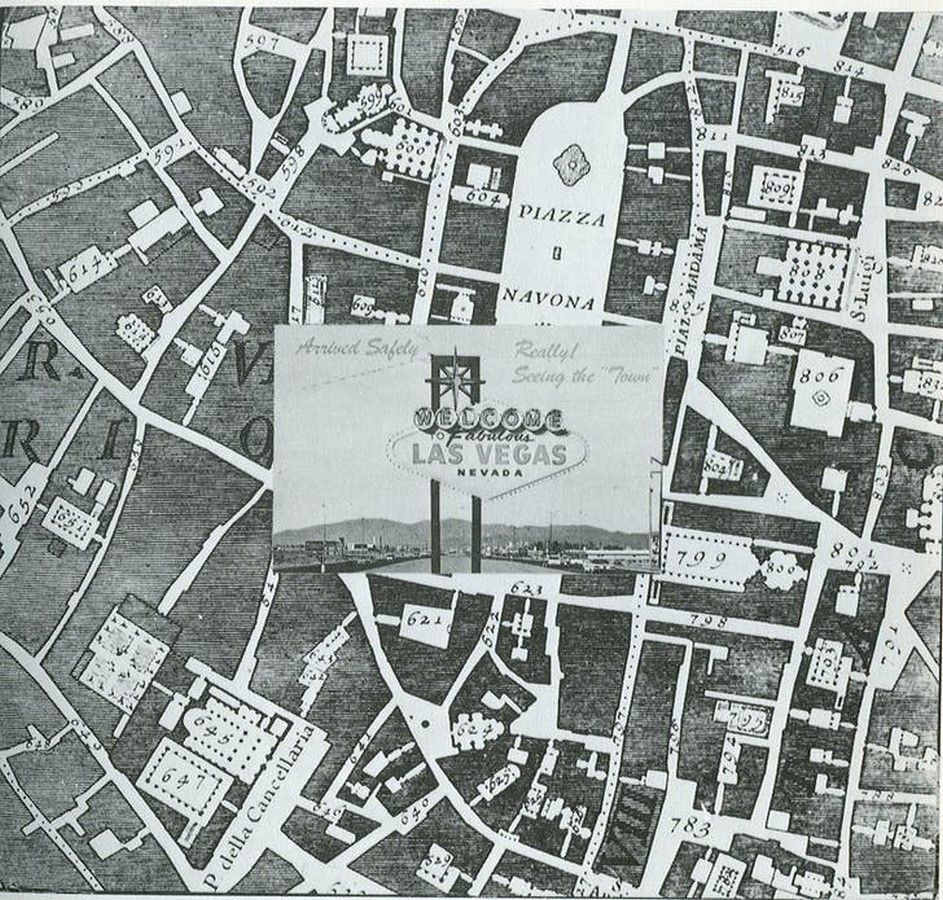
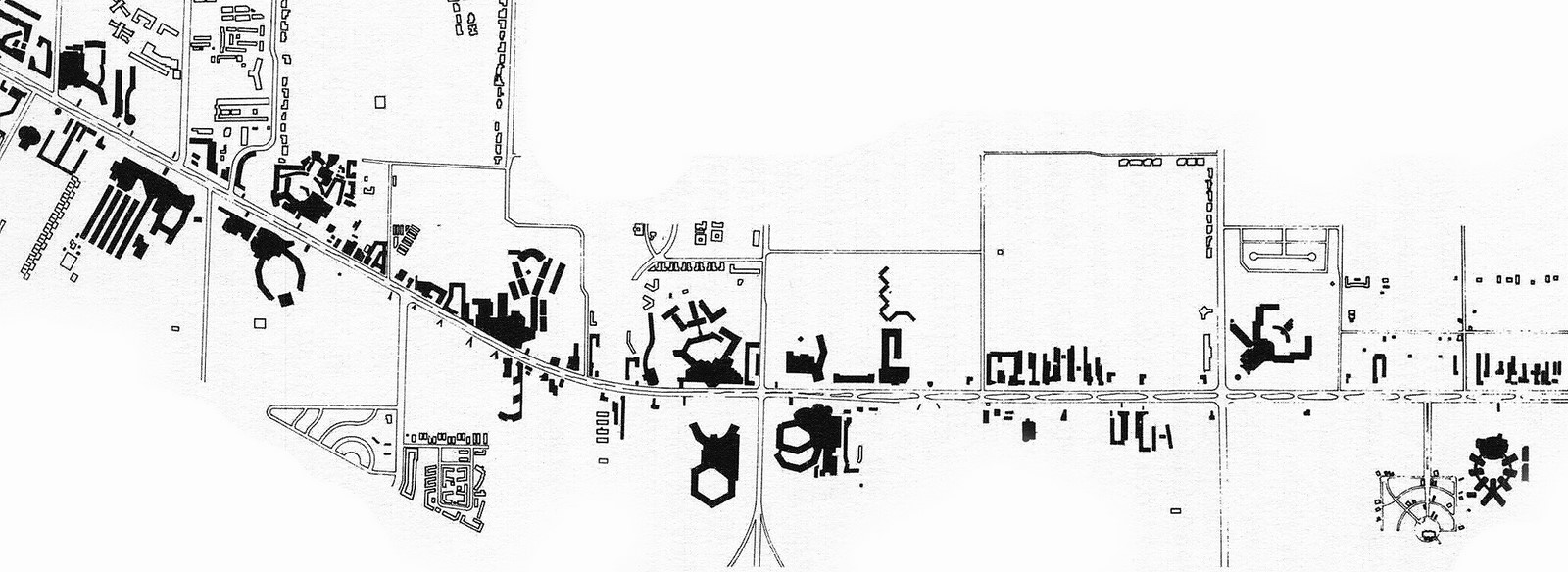
Part I
Part –I of Learning from Las Vegas is titled “A Significance for A&P Parking Lots or Learning from Las Vegas” and is essentially an account of the authors’ study of the architecture of the Las Vegas Commercial Strip. In it, Robert Venturi and Denise Scott Brown introduce the Strip and describe how modern architecture has influenced its environment. It brings to light the value of symbolism over form and discusses the “automotive culture” that influenced the architecture and design of the Las Vegas Strip.
Instead of buildings, symbols like bright signage and flashy lights dominated the space and decorated facades took precedence over the conventional behinds to aim towards the people driving on the highway.
Within the context of Las Vegas, Robert Venturi, Denise Scott Brown, and Steven Izenour also present their opinion on the ideals of modernism that prevailed at the time and its rejection of ornamentation and expressive symbolism. This part of the text also includes mapping of the Strip and spatial and image analysis of the buildings on the highway.
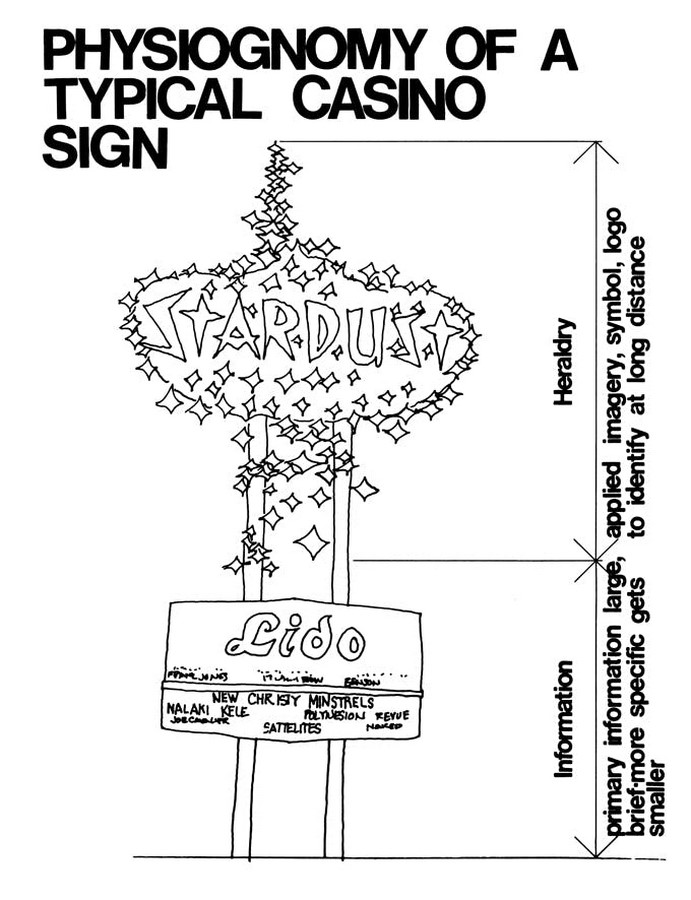
Part II | Learning from Las Vegas
Part two of the book called the “Ugly and Ordinary Architecture, or the Decorated Shed”, is a comment on the group’s observations and findings of the cinematic architecture in the first part. In it, Robert Venturi, Denise Scott Brown, and Steven Izenour also analyze the two categories of building styles in Las Vegas: one termed as a “Duck”, other as a “Decorated Shed”.
The “duck” represents a building that uses its form and volume to express its program and meaning. Following a modernist approach to their architecture, these buildings seem rather ordinary and simple. A “decorated shed”, on the other hand, relies on signage and imagery to convey its function. These buildings adapted ornamentation, visual references, and symbolism in their designs, much against the ideals of modern architecture.
With their writings and elaborate discussions in this book, the three authors helped to bring this trend of decoration and symbolism in architecture back into everyday conversation.
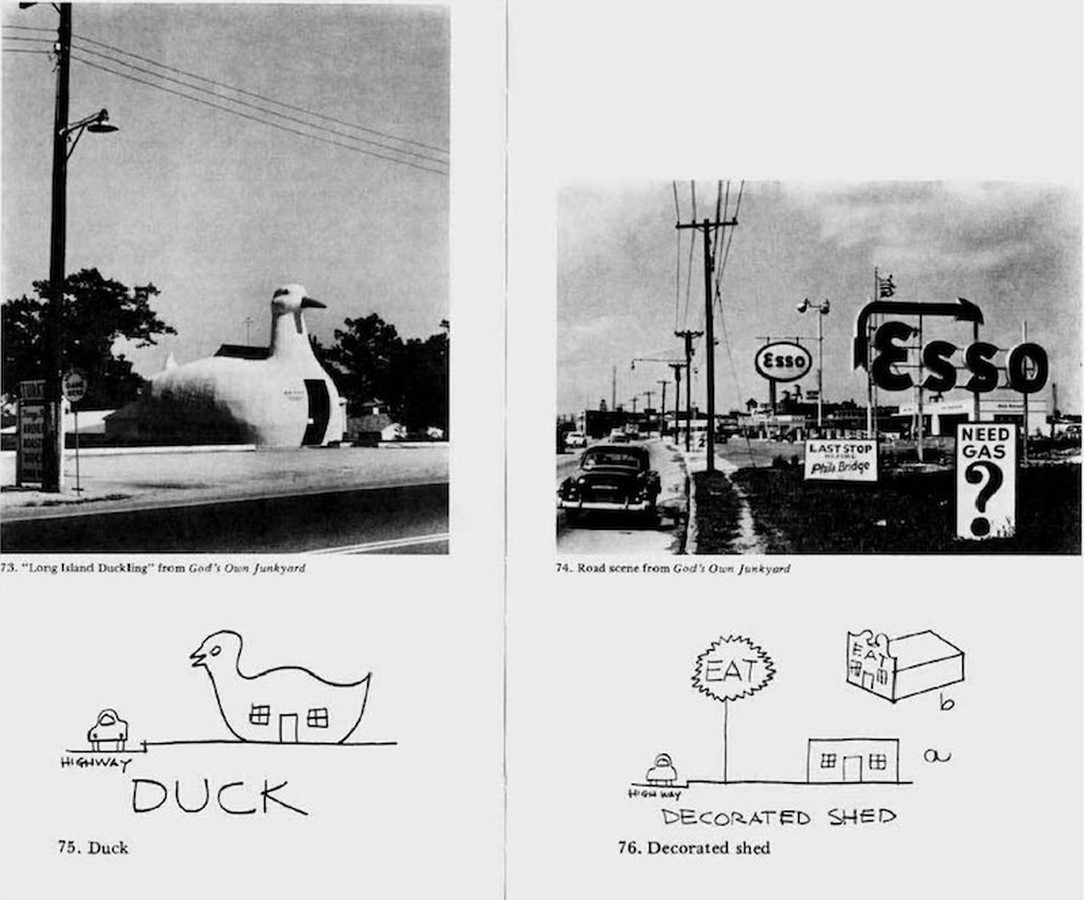
After being published in 1972, Learning from Las Vegas attracted a healthy controversy that divided its readers into two groups: “the Whites” who wrote against the book and “the Greys” who wrote in favor of it. While some people criticized the book and others spoke highly of it, its significant influence on the architectural community and theory cannot be dismissed.
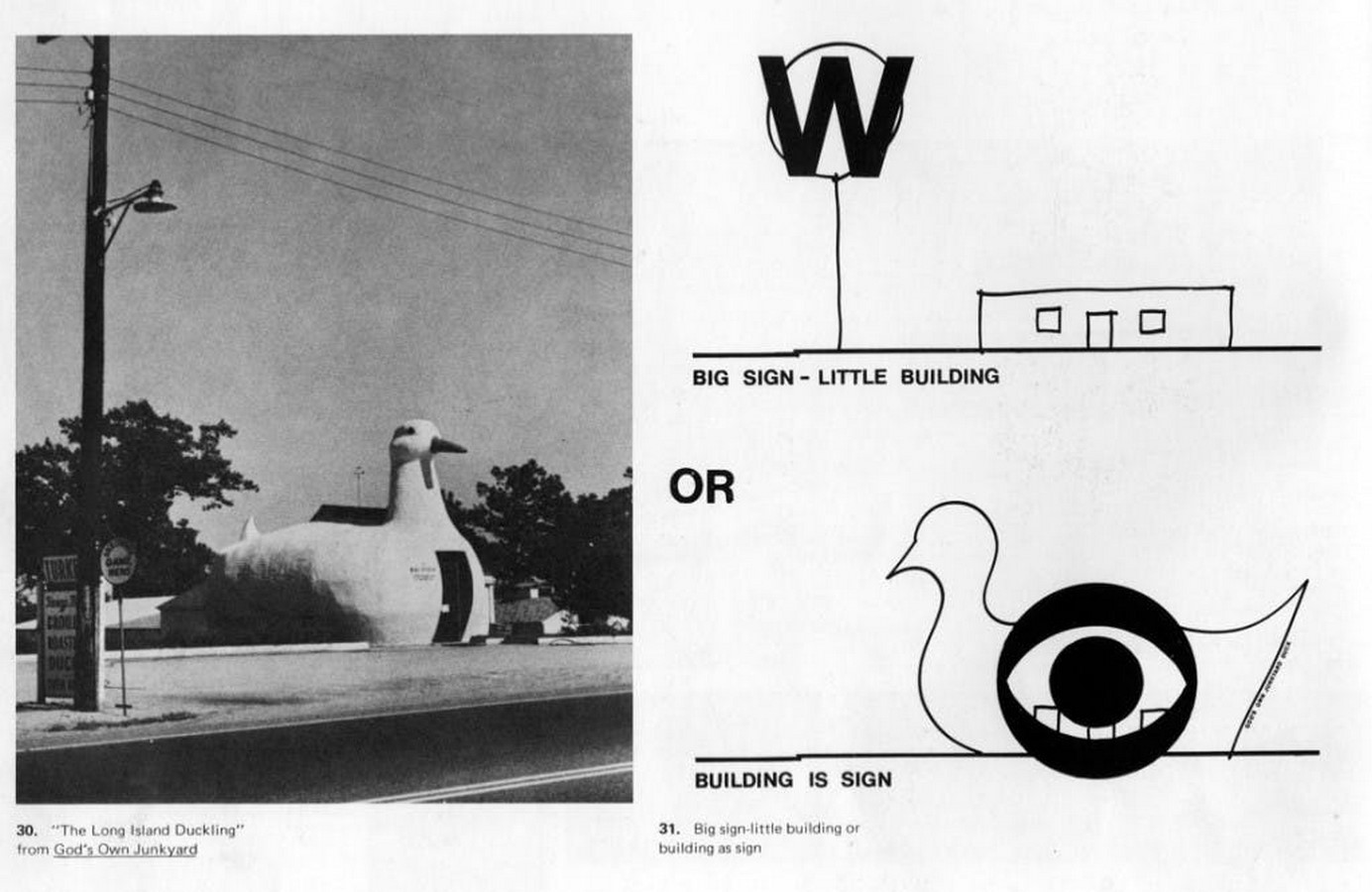
In conclusion, the book effortlessly highlights the wealth of meaning in the Strip’s bright signage and visual references while successfully evoking “a lived experience of the Las Vegas Strip” through the series of images and maps. It also encourages the reader to change the way they look at buildings and also question how they perceive architecture to be able to look at it objectively.
However, within the backdrop of the Las Vegas Strip, the lack of modernist ideals for its architecture and the importance of symbols to communicate with the people still remains the main focus of the book, just as Denise Scott Brown says in the introduction, “Las Vegas is not the subject of the book, the symbolism of architectural form is.”
References
Venturi, R., Scott Brown, D., and Izenour, S. (1972). Learning From Las Vegas. Cambridge, MA and London: The MIT Press.
Nicholas Korody (2016). Learning from ‘Learning from Las Vegas’ with Denise Scott Brown, Part I: The Foundation. [online]. Available at: https://archinect.com/features/article/149970924/learning-from-learning-from-las-vegas-with-denise-scott-brown-part-i-the-foundation [Accessed 04 Jul 2021].
Lewis Martin (2021). Learning from Las Vegas Book Review and Notes. [online]. Available at: https://declad.com/learning-from-las-vegas-book-review-and-notes/ [Accessed 04 Jul 2021].
Brett Lazer (2011). Comment: Learning from Las Vegas. [online]. Available at: https://ifacontemporary.org/learning-from-las-vegas-and-the-antinomy-of-the-postmodern-manifesto/ [Accessed 04 Jul 2021].
Paul Davies (2018). Signs of the times: Learning from Las Vegas returns. [online]. Available at: https://www.architectural-review.com/essays/signs-of-the-times-learning-from-las-vegas-returns?tkn=1/ [Accessed 04 Jul 2021].












